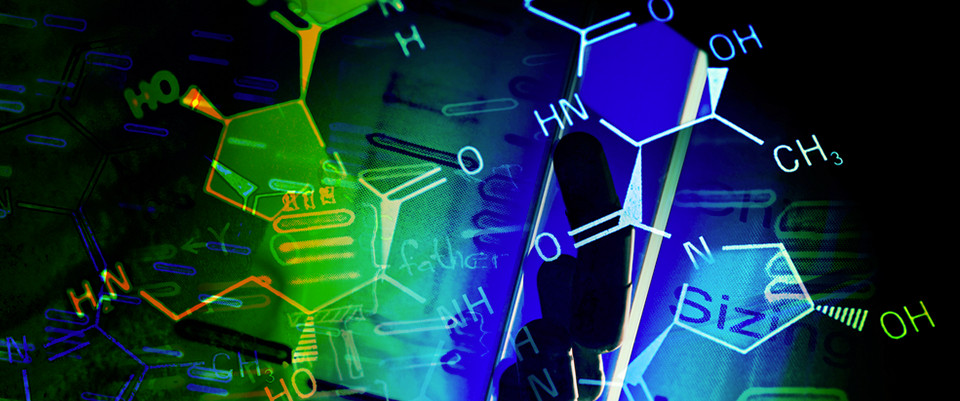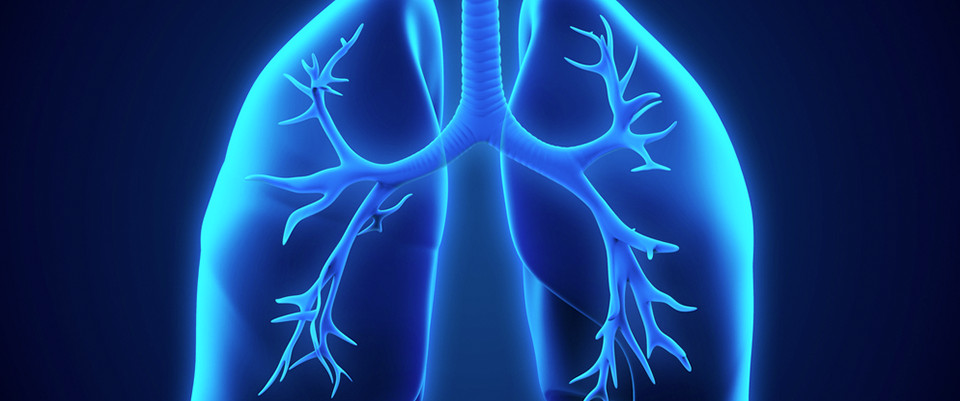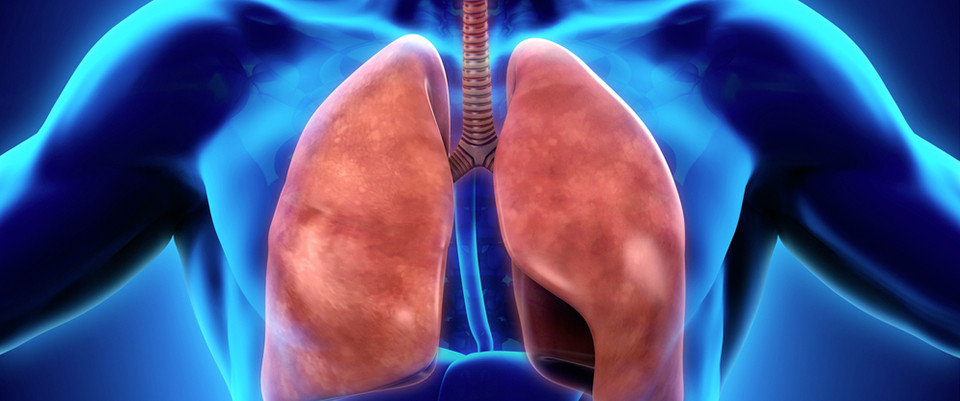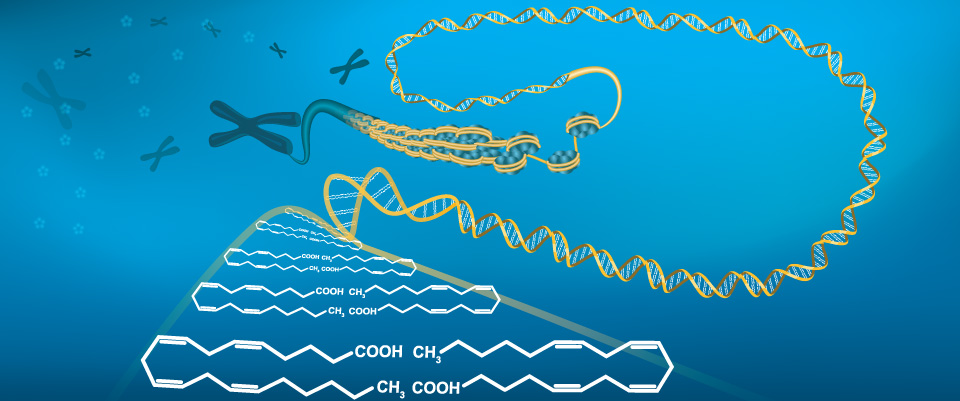PubMed
Annotation of metabolites from gas chromatography/atmospheric pressure chemical ionization tandem mass spectrometry data using an in silico generated compound database and MetFrag.
Related Articles
Annotation of metabolites from gas chromatography/atmospheric pressure chemical ionization tandem mass spectrometry data using an in silico generated compound database and MetFrag.
Rapid Commun Mass Spectrom. 2015 Aug 30;29(16):1521-9
Authors: Ruttkies C, Strehmel N, Scheel D, Neumann S
Abstract
RATIONALE: Gas chromatography (GC) coupled to atmospheric pressure chemical ionization quadrupole time-of-flight mass spectrometry (APCI-QTOFMS) is an emerging technology in metabolomics. Reference spectra for GC/APCI-MS/MS barely exist; therefore, in silico fragmentation approaches and structure databases are prerequisites for annotation. To expand the limited coverage of derivatised structures in structure databases, in silico derivatisation procedures are required.
METHODS: A cheminformatics workflow has been developed for in silico derivatisation of compounds found in KEGG and PubChem, and validated on the Golm Metabolome Database (GMD). To demonstrate this workflow, these in silico generated databases were applied together with MetFrag to APCI-MS/MS spectra acquired from GC/APCI-MS/MS profiles of Arabidopsis thaliana and Solanum tuberosum. The Metabolite-Likeness of the original candidate structure was included as additional scoring term aiming at candidate structures of natural origin.
RESULTS: The validation of our in silico derivatisation workflow on the GMD showed a true positive rate of 94%. MetFrag was applied to two datasets. In silico derivatisation of the KEGG and PubChem database served as a candidate source. For both datasets the Metabolite-Likeness score improved the identification performance. The derivatised data sources have been included into the MetFrag web application for the annotation of GC/APCI-MS/MS spectra.
CONCLUSIONS: We demonstrated that MetFrag can support the identification of components from GC/APCI-MS/MS profiles, especially in the (common) case where reference spectra are not available. This workflow can be easily adapted to other types of derivatisation and is freely accessible together with the generated structure databases. Copyright © 2015 John Wiley & Sons, Ltd.
PMID: 26212167 [PubMed - in process]
High-throughput profiling of protein N-glycosylation by MALDI-TOF-MS employing linkage-specific sialic acid esterification.
Related Articles
High-throughput profiling of protein N-glycosylation by MALDI-TOF-MS employing linkage-specific sialic acid esterification.
Anal Chem. 2014 Jun 17;86(12):5784-93
Authors: Reiding KR, Blank D, Kuijper DM, Deelder AM, Wuhrer M
Abstract
Protein glycosylation is an important post-translational modification associated, among others, with diseases and the efficacy of biopharmaceuticals. Matrix-assisted laser desorption/ionization (MALDI) time-of-fight (TOF) mass spectrometry (MS) can be performed to study glycosylation in a high-throughput manner, but is hampered by the instability and ionization bias experienced by sialylated glycan species. Stabilization and neutralization of these sialic acids can be achieved by permethylation or by specific carboxyl group derivatization with the possibility of discrimination between α2,3- and α2,6-linked sialic acids. However, these methods typically require relatively pure glycan samples, show sensitivity to side reactions, and need harsh conditions or long reaction times. We established a rapid, robust and linkage-specific high-throughput method for sialic acid stabilization and MALDI-TOF-MS analysis, to allow direct modification of impure glycan-containing mixtures such as PNGase F-released human plasma N-glycome. Using a combination of carboxylic acid activators in ethanol achieved near-complete ethyl esterification of α2,6-linked sialic acids and lactonization of α2,3-linked variants, in short time using mild conditions. Glycans were recovered by hydrophilic interaction liquid chromatography solid phase extraction and analyzed by MALDI-TOF-MS in reflectron positive mode with 2,5-dihydroxybenzoic acid as the matrix substance. Analysis of the human plasma N-glycome allowed high-throughput detection and relative quantitation of more than 100 distinct N-glycan compositions with varying sialic acid linkages.
PMID: 24831253 [PubMed - indexed for MEDLINE]
Compound identification in gas chromatography/mass spectrometry-based metabolomics by blind source separation.
Compound identification in gas chromatography/mass spectrometry-based metabolomics by blind source separation.
J Chromatogr A. 2015 Jul 15;
Authors: Domingo-Almenara X, Perera A, Ramírez N, Cañellas N, Correig X, Brezmes J
Abstract
Metabolomics GC-MS samples involve high complexity data that must be effectively resolved to produce chemically meaningful results. Multivariate curve resolution-alternating least squares (MCR-ALS) is the most frequently reported technique for that purpose. More recently, independent component analysis (ICA) has been reported as an alternative to MCR. Those algorithms attempt to infer a model describing the observed data and, therefore, the least squares regression used in MCR assumes that the data is a linear combination of that model. However, due to the high complexity of real data, the construction of a model to describe optimally the observed data is a critical step and these algorithms should prevent the influence from outlier data. This study proves independent component regression (ICR) as an alternative for GC-MS compound identification. Both ICR and MCR though require least squares regression to correctly resolve the mixtures. In this paper, a novel orthogonal signal deconvolution (OSD) approach is introduced, which uses principal component analysis to determine the compound spectra. The study includes a compound identification comparison between the results by ICA-OSD, MCR-OSD, ICR and MCR-ALS using pure standards and human serum samples. Results shows that ICR may be used as an alternative to multivariate curve methods, as ICR efficiency is comparable to MCR-ALS. Also, the study demonstrates that the proposed OSD approach achieves greater spectral resolution accuracy than the traditional least squares approach when compounds elute under undue interference of biological matrices.
PMID: 26210114 [PubMed - as supplied by publisher]
(1)H NMR based metabolomics approach to study the toxic effects of dichlorvos on goldfish (Carassius auratus).
(1)H NMR based metabolomics approach to study the toxic effects of dichlorvos on goldfish (Carassius auratus).
Chemosphere. 2015 Jul 22;138:537-545
Authors: Liu Y, Chen T, Li MH, Xu HD, Jia AQ, Zhang JF, Wang JS
Abstract
Dichlorvos (DDVP), one of the most widely used organophosphorus pesticides (OPs), has caused serious pollution in environment. In this study, (1)H nuclear magnetic resonance (NMR) based metabolomics approach combined with histopathological and immunohistochemical examination, and biochemical assays were used to investigate toxicities of DDVP on goldfish (Carassius auratus). After 10days' exposure of DDVP at three dosages of 5.18, 2.59 and 1.73mg/L, goldfish tissues (gill, brain, liver and kidney) and serum were collected. Histopathology revealed severe impairment of gills, livers and kidneys, and immunohistochemistry disclosed glial fibrillary acidic protein (GFAP) positive reactive astrocytes in brains. Orthogonal signal correction-partial least squares-discriminant analysis (OSC-PLS-DA) of NMR profiles disclosed that DDVP influenced many metabolites (glutamate, aspartate, acetylcholine, 4-aminobutyrate, glutathione, AMP and lactate in brain; glutathione, glucose, histamine in liver; BCAAs, AMP, aspartate, glutamate, riboflavin in kidney) dose-dependently, involved with imbalance of neurotransmitters, oxidative stress, and disorders of energy and amino acid metabolism. Several self-protection mechanisms concerning glutamate degradation and glutathione (GSH) redox system were found in DDVP intoxicated goldfish.
PMID: 26210017 [PubMed - as supplied by publisher]
Prognostic clinical and molecular biomarkers of renal disease in type 2 diabetes.
Related Articles
Prognostic clinical and molecular biomarkers of renal disease in type 2 diabetes.
Nephrol Dial Transplant. 2015 Aug;30(suppl 4):iv86-iv95
Authors: Pena MJ, de Zeeuw D, Mischak H, Jankowski J, Oberbauer R, Woloszczuk W, Benner J, Dallmann G, Mayer B, Mayer G, Rossing P, Lambers Heerspink HJ
Abstract
Diabetic kidney disease occurs in ∼25-40% of patients with type 2 diabetes. Given the high risk of progressive renal function loss and end-stage renal disease, early identification of patients with a renal risk is important. Novel biomarkers may aid in improving renal risk stratification. In this review, we first focus on the classical panel of albuminuria and estimated glomerular filtration rate as the primary clinical predictors of renal disease and then move our attention to novel biomarkers, primarily concentrating on assay-based multiple/panel biomarkers, proteomics biomarkers and metabolomics biomarkers. We focus on multiple biomarker panels since the molecular processes of renal disease progression in type 2 diabetes are heterogeneous, rendering it unlikely that a single biomarker significantly adds to clinical risk prediction. A limited number of prospective studies of multiple biomarkers address the predictive performance of novel biomarker panels in addition to the classical panel in type 2 diabetes. However, the prospective studies conducted so far have small sample sizes, are insufficiently powered and lack external validation. Adequately sized validation studies of multiple biomarker panels are thus required. There is also a paucity of studies that assess the effect of treatments on novel biomarker panels and determine whether initial treatment-induced changes in novel biomarkers predict changes in long-term renal outcomes. Such studies can not only improve our healthcare but also our understanding of the mechanisms of actions of existing and novel drugs and may yield biomarkers that can be used to monitor drug response. We conclude that this will be an area to focus research on in the future.
PMID: 26209743 [PubMed - as supplied by publisher]
A novel approach to the simultaneous extraction and non-targeted analysis of the small molecules metabolome and lipidome using 96-well solid phase extraction plates with column-switching technology.
Related Articles
A novel approach to the simultaneous extraction and non-targeted analysis of the small molecules metabolome and lipidome using 96-well solid phase extraction plates with column-switching technology.
J Chromatogr A. 2015 Jul 16;
Authors: Li Y, Zhang Z, Liu X, Li A, Hou Z, Wang Y, Zhang Y
Abstract
This study combines solid phase extraction (SPE) using 96-well plates with column-switching technology to construct a rapid and high-throughput method for the simultaneous extraction and non-targeted analysis of small molecules metabolome and lipidome based on ultra-performance liquid chromatography quadrupole time-of-flight mass spectrometry. This study first investigated the columns and analytical conditions for small molecules metabolome and lipidome, separated by an HSS T3 and BEH C18 columns, respectively. Next, the loading capacity and actuation duration of SPE were further optimized. Subsequently, SPE and column switching were used together to rapidly and comprehensively analyze the biological samples. The experimental results showed that the new analytical procedure had good precision and maintained sample stability (RSD<15%). The method was then satisfactorily applied to more widely analyze the small molecules metabolome and lipidome to test the throughput. The resulting method represents a new analytical approach for biological samples, and a highly useful tool for researches in metabolomics and lipidomics.
PMID: 26209193 [PubMed - as supplied by publisher]
Comparison of Bile Acids and Acetaminophen Protein Adducts in Children and Adolescents with Acetaminophen Toxicity.
Comparison of Bile Acids and Acetaminophen Protein Adducts in Children and Adolescents with Acetaminophen Toxicity.
PLoS One. 2015;10(7):e0131010
Authors: James L, Yan K, Pence L, Simpson P, Bhattacharyya S, Gill P, Letzig L, Kearns G, Beger R
Abstract
Metabolomics approaches have enabled the study of new mechanisms of liver injury in experimental models of drug toxicity. Disruption of bile acid homeostasis is a known mechanism of drug induced liver injury. The relationship of individual bile acids to indicators of oxidative drug metabolism (acetaminophen protein adducts) and liver injury was examined in children with acetaminophen overdose, hospitalized children with low dose exposure to acetaminophen, and children with no recent exposure to acetaminophen. Nine bile acids were quantified through targeted metabolomic analysis in the serum samples of the three groups. Bile acids were compared to serum levels of acetaminophen protein adducts and alanine aminotransferase. Glycodeoxycholic acid, taurodeoxycholic acid, and glycochenodeoxycholic acid were significantly increased in children with acetaminophen overdose compared to healthy controls. Among patients with acetaminophen overdose, bile acids were higher in subjects with acetaminophen protein adduct values > 1.0 nmol/mL and modest correlations were noted for three bile acids and acetaminophen protein adducts as follows: taurodeoxycholic acid (R=0.604; p<0.001), glycodeoxycholic acid (R=0.581; p<0.001), and glycochenodeoxycholic acid (R=0.571; p<0.001). Variability in bile acids was greater among hospitalized children receiving low doses of acetaminophen than in healthy children with no recent acetaminophen exposure. Compared to bile acids, acetaminophen protein adducts more accurately discriminated among children with acetaminophen overdose, children with low dose exposure to acetaminophen, and healthy control subjects. In children with acetaminophen overdose, elevations of conjugated bile acids were associated with specific indicators of acetaminophen metabolism and non-specific indicators of liver injury.
PMID: 26208104 [PubMed - as supplied by publisher]
The Warburg effect: a balance of flux analysis.
Related Articles
The Warburg effect: a balance of flux analysis.
Metabolomics. 2015 Aug;11(4):787-796
Authors: Vaitheesvaran B, Xu J, Yee J, Q-Y L, Go VL, Xiao GG, Lee WN
Abstract
Cancer metabolism is characterized by increased macromolecular syntheses through coordinated increases in energy and substrate metabolism. The observation that cancer cells produce lactate in an environment of oxygen sufficiency (aerobic glycolysis) is a central theme of cancer metabolism known as the Warburg effect. Aerobic glycolysis in cancer metabolism is accompanied by increased pentose cycle and anaplerotic activities producing energy and substrates for macromolecular synthesis. How these processes are coordinated is poorly understood. Recent advances have focused on molecular regulation of cancer metabolism by oncogenes and tumor suppressor genes which regulate numerous enzymatic steps of central glucose metabolism. In the past decade, new insights in cancer metabolism have emerged through the application of stable isotopes particularly from (13)C carbon tracing. Such studies have provided new evidence for system-wide changes in cancer metabolism in response to chemotherapy. Interestingly, experiments using metabolic inhibitors on individual biochemical pathways all demonstrate similar system-wide effects on cancer metabolism as in targeted therapies. Since biochemical reactions in the Warburg effect place competing demands on available precursors, high energy phosphates and reducing equivalents, the cancer metabolic system must fulfill the condition of balance of flux (homeostasis). In this review, the functions of the pentose cycle and of the tricarboxylic acid (TCA) cycle in cancer metabolism are analyzed from the balance of flux point of view. Anticancer treatments that target molecular signaling pathways or inhibit metabolism alter the invasive or proliferative behavior of the cancer cells by their effects on the balance of flux (homeostasis) of the cancer metabolic phenotype.
PMID: 26207106 [PubMed - as supplied by publisher]
Cellular and Molecular Mechanisms of Phenotypic Switch in Gastrointestinal Smooth Muscle.
Related Articles
Cellular and Molecular Mechanisms of Phenotypic Switch in Gastrointestinal Smooth Muscle.
J Cell Physiol. 2015 Jul 23;
Authors: Scirocco A, Matarrese P, Carabotti M, Ascione B, Malorni W, Severi C
Abstract
As a general rule, smooth muscle cells (SMC) are able to switch from a contractile phenotype to a less mature synthetic phenotype. This switch is accompanied by a loss of differentiation with decreased expression of contractile markers, increased proliferation as well as the synthesis and the release of several signaling molecules such as pro-inflammatory cytokines, chemotaxis-associated molecules and growth factors. This SMC phenotypic plasticity has extensively been investigated in vascular diseases but interest is also emerging in the field of gastroenterology. It has in fact been postulated that altered micro-environmental conditions, including the composition of microbiota, could trigger the remodeling of the enteric SMC, with phenotype changes and consequent alterations of contraction and impairment of gut motility. Several molecular actors participate in this phenotype remodeling. These include extracellular molecules such as cytokines and extracellular matrix proteins, as well as intracellular proteins, e.g. transcription factors. Epigenetic control mechanisms and miRNA have also been suggested to participate. In this review key roles and actors of smooth muscle phenotypic switch, mainly in GI tissue, are described and discussed in the light of literature data available so far. This article is protected by copyright. All rights reserved.
PMID: 26206426 [PubMed - as supplied by publisher]
Dynamic metabolic change is indicative of inflammation-induced transformation of hepatic cells.
Related Articles
Dynamic metabolic change is indicative of inflammation-induced transformation of hepatic cells.
Int J Biochem Cell Biol. 2015 Jul 20;
Authors: Peng B, Liu F, Han R, Luo G, Cathopoulis T, Lu K, Li X, Yang L, Liu GY, Cai JC, Sh SL
Abstract
The observation that prolonged inflammation plays a causative role in cancer development has been well documented. However, an incremental process that leads from healthy to malignant phenotypes has not yet been described. Experimentally induced hepatocellular carcinoma is considered one of the representative laboratory models for studying this process. Hepatic exposure to viral infection or toxic reagents leads to chronic inflammation and gradual transformation into hepatocellular carcinoma. Here we present metabolomic profiles of hepatic cells at different stages during inflammation-induced cellular transformation by N-nitrosodiethylamine. Using gas chromatography-mass spectrometry, we quantitatively assessed the changes in cellular metabolites during the transformation process in hepatitis and liver cirrhosis. Further pathway analysis of the differentially expressed metabolites showed that carbohydrate metabolism and lipid metabolism were greatly altered in hepatitis and liver cirrhosis, respectively. Additionally, the enhanced inflammation in cirrhosis was associated with a shift from carbohydrate metabolism to lipid and amino acid metabolism. Among the differentially expressed metabolites found in diseased mouse livers, D-glucose and D-mannitol showed the most significant changes, highlighting them as potential early-diagnostic biomarkers of hepatocellular carcinoma development. Taken together, these investigations into the dynamic metabolic changes that occur during the precancerous stages of hepatocellular carcinoma add to and refine understanding of how chronic inflammation ultimately leads to cancer. Furthermore, the findings set the stage for identifying metabolites that may serve as early-diagnostic indicators of these unfolding events.
PMID: 26205150 [PubMed - as supplied by publisher]
Modern bioinformatics meets traditional Chinese medicine.
Related Articles
Modern bioinformatics meets traditional Chinese medicine.
Brief Bioinform. 2014 Nov;15(6):984-1003
Authors: Gu P, Chen H
Abstract
MOTIVATION: Traditional Chinese medicine (TCM) is gaining increasing attention with the emergence of integrative medicine and personalized medicine, characterized by pattern differentiation on individual variance and treatments based on natural herbal synergism. Investigating the effectiveness and safety of the potential mechanisms of TCM and the combination principles of drug therapies will bridge the cultural gap with Western medicine and improve the development of integrative medicine. Dealing with rapidly growing amounts of biomedical data and their heterogeneous nature are two important tasks among modern biomedical communities. Bioinformatics, as an emerging interdisciplinary field of computer science and biology, has become a useful tool for easing the data deluge pressure by automating the computation processes with informatics methods. Using these methods to retrieve, store and analyze the biomedical data can effectively reveal the associated knowledge hidden in the data, and thus promote the discovery of integrated information. Recently, these techniques of bioinformatics have been used for facilitating the interactional effects of both Western medicine and TCM. The analysis of TCM data using computational technologies provides biological evidence for the basic understanding of TCM mechanisms, safety and efficacy of TCM treatments. At the same time, the carrier and targets associated with TCM remedies can inspire the rethinking of modern drug development. This review summarizes the significant achievements of applying bioinformatics techniques to many aspects of the research in TCM, such as analysis of TCM-related '-omics' data and techniques for analyzing biological processes and pharmaceutical mechanisms of TCM, which have shown certain potential of bringing new thoughts to both sides.
PMID: 24067932 [PubMed - indexed for MEDLINE]
(1)H NMR-based metabolic profiling of liver in chronic unpredictable mild stress rats with genipin treatment.
Related Articles
(1)H NMR-based metabolic profiling of liver in chronic unpredictable mild stress rats with genipin treatment.
J Pharm Biomed Anal. 2015 Jul 9;115:150-158
Authors: Chen JL, Shi BY, Xiang H, Hou WJ, Qin XM, Tian JS, Du GH
Abstract
Genipin, a hydrolyzed metabolite of geniposide extracted from the fruit of Gardenia jasminoides Ellis, has shown promise in alleviating depressive symptoms, however, the antidepressant mechanism of genipin remains unclear and incomprehensive. In this study, the metabolic profiles of aqueous and lipophilic extracts in liver of the chronic unpredictable mild stress (CUMS)-induced rat with genipin treatment were investigated using proton nuclear magnetic resonance ((1)H NMR) spectroscopy coupled with multivariate data analysis. Significant differences in the metabolic profiles of rats in the CUMS model group (MS) and the control group (NS) were observed with metabolic effects including decreasing in choline, glycerol and glycogen, increasing in lactate, alanine and succinate, and a disordered lipid metabolism, while the moderate dose (50mg/kg) of genipin could significantly regulate the concentrations of glycerol, lactate, alanine, succinate and the lipid to their normal levels. These biomakers were involved in metabolism pathways such as glycolysis/gluconeogensis, tricarboxylic acid (TCA) cycle and lipid metabolism, which may be helpful for understanding of antidepressant mechanism of genipin.
PMID: 26204246 [PubMed - as supplied by publisher]
Quantitative profiling of polar primary metabolites of two chickpea cultivars with contrasting responses to salinity.
Related Articles
Quantitative profiling of polar primary metabolites of two chickpea cultivars with contrasting responses to salinity.
J Chromatogr B Analyt Technol Biomed Life Sci. 2015 Jul 13;1000:1-13
Authors: Dias DA, Hill CB, Jayasinghe NS, Atieno J, Sutton T, Roessner U
Abstract
This study reports a GC-QqQ-MS method for the quantification of forty-eight primary metabolites from four major classes (sugars, sugar acids, sugar phosphates, and organic acids) which can be applied to a number of biological systems. The method was validated in terms of linearity, reproducibility and recovery, using both calibration standards and real samples. Additionally, twenty-eight biogenic amines and amino acids were quantified using an established LC-QqQ-MS method. Both GC-QqQ-MS and LC-QqQ-MS quantitative methods were applied to plant extracts from flower and pod tissue of two chickpea (Cicer arietinum L.) cultivars differing in their ability to tolerate salinity, which were grown under control and salt-treated conditions. Statistical analysis was applied to the data sets using the absolute concentrations of metabolites to investigate the differences in metabolite profiles between the different cultivars, plant tissues, and treatments. The method is a significant improvement of present methodology for quantitative GC-MS metabolite profiling of organic acids and sugars, and provides new insights of chickpea metabolic responses to salinity stress. It is applicable to the analysis of dynamic changes in endogenous concentrations of polar primary metabolites to study metabolic responses to environmental stresses in complex biological tissues.
PMID: 26204234 [PubMed - as supplied by publisher]
Linking diet to acne metabolomics, inflammation, and comedogenesis: an update.
Related Articles
Linking diet to acne metabolomics, inflammation, and comedogenesis: an update.
Clin Cosmet Investig Dermatol. 2015;8:371-88
Authors: Melnik BC
Abstract
Acne vulgaris, an epidemic inflammatory skin disease of adolescence, is closely related to Western diet. Three major food classes that promote acne are: 1) hyperglycemic carbohydrates, 2) milk and dairy products, 3) saturated fats including trans-fats and deficient ω-3 polyunsaturated fatty acids (PUFAs). Diet-induced insulin/insulin-like growth factor (IGF-1)-signaling is superimposed on elevated IGF-1 levels during puberty, thereby unmasking the impact of aberrant nutrigenomics on sebaceous gland homeostasis. Western diet provides abundant branched-chain amino acids (BCAAs), glutamine, and palmitic acid. Insulin and IGF-1 suppress the activity of the metabolic transcription factor forkhead box O1 (FoxO1). Insulin, IGF-1, BCAAs, glutamine, and palmitate activate the nutrient-sensitive kinase mechanistic target of rapamycin complex 1 (mTORC1), the key regulator of anabolism and lipogenesis. FoxO1 is a negative coregulator of androgen receptor, peroxisome proliferator-activated receptor-γ (PPARγ), liver X receptor-α, and sterol response element binding protein-1c (SREBP-1c), crucial transcription factors of sebaceous lipogenesis. mTORC1 stimulates the expression of PPARγ and SREBP-1c, promoting sebum production. SREBP-1c upregulates stearoyl-CoA- and Δ6-desaturase, enhancing the proportion of monounsaturated fatty acids in sebum triglycerides. Diet-mediated aberrations in sebum quantity (hyperseborrhea) and composition (dysseborrhea) promote Propionibacterium acnes overgrowth and biofilm formation with overexpression of the virulence factor triglyceride lipase increasing follicular levels of free palmitate and oleate. Free palmitate functions as a "danger signal," stimulating toll-like receptor-2-mediated inflammasome activation with interleukin-1β release, Th17 differentiation, and interleukin-17-mediated keratinocyte proliferation. Oleate stimulates P. acnes adhesion, keratinocyte proliferation, and comedogenesis via interleukin-1α release. Thus, diet-induced metabolomic alterations promote the visible sebofollicular inflammasomopathy acne vulgaris. Nutrition therapy of acne has to increase FoxO1 and to attenuate mTORC1/SREBP-1c signaling. Patients should balance total calorie uptake and restrict refined carbohydrates, milk, dairy protein supplements, saturated fats, and trans-fats. A paleolithic-like diet enriched in vegetables and fish is recommended. Plant-derived mTORC1 inhibitors and ω-3-PUFAs are promising dietary supplements supporting nutrition therapy of acne vulgaris.
PMID: 26203267 [PubMed]
Metabolomics Reveals a Key Role for Fumarate in Mediating the Effects of NADPH Oxidase 4 in Diabetic Kidney Disease.
Related Articles
Metabolomics Reveals a Key Role for Fumarate in Mediating the Effects of NADPH Oxidase 4 in Diabetic Kidney Disease.
J Am Soc Nephrol. 2015 Jul 22;
Authors: You YH, Quach T, Saito R, Pham J, Sharma K
Abstract
The NADPH oxidase (NOX) isoform NOX4 has been linked with diabetic kidney disease (DKD). However, a mechanistic understanding of the downstream effects of NOX4 remains to be established. We report that podocyte-specific induction of NOX4 in vivo was sufficient to recapitulate the characteristic glomerular changes noted with DKD, including glomerular hypertrophy, mesangial matrix accumulation, glomerular basement membrane thickening, albuminuria, and podocyte dropout. Intervention with a NOX1/NOX4 inhibitor reduced albuminuria, glomerular hypertrophy, and mesangial matrix accumulation in the F1 Akita model of DKD. Metabolomic analyses from these mouse studies revealed that tricarboxylic acid (TCA) cycle-related urinary metabolites were increased in DKD, but fumarate levels were uniquely reduced by the NOX1/NOX4 inhibitor. Expression of fumarate hydratase (FH), which regulates urine fumarate accumulation, was reduced in the diabetic kidney (in mouse and human tissue), and administration of the NOX1/NOX4 inhibitor increased glomerular FH levels in diabetic mice. Induction of Nox4 in vitro and in the podocyte-specific NOX4 transgenic mouse led to reduced FH levels. In vitro, fumarate stimulated endoplasmic reticulum stress, matrix gene expression, and expression of hypoxia-inducible factor-1α (HIF-1α) and TGF-β. Similar upregulation of renal HIF-1α and TGF-β expression was observed in NOX4 transgenic mice and diabetic mice and was attenuated by NOX1/NOX4 inhibition in diabetic mice. In conclusion, NOX4 is a major mediator of diabetes-associated glomerular dysfunction through targeting of renal FH, which increases fumarate levels. Fumarate is therefore a key link connecting metabolic pathways to DKD pathogenesis, and measuring urinary fumarate levels may have application for monitoring renal NOX4 activity.
PMID: 26203118 [PubMed - as supplied by publisher]
Capillary electrophoresis reveals polyamine metabolism modulation in Leishmania (Leishmania) amazonensis wild type and arginase knockout mutants under arginine starvation.
Related Articles
Capillary electrophoresis reveals polyamine metabolism modulation in Leishmania (Leishmania) amazonensis wild type and arginase knockout mutants under arginine starvation.
Electrophoresis. 2015 Jul 23;
Authors: Castilho-Martins EA, Canuto GA, Muxel SM, da Silva MF, Floeter-Winter LM, Del Aguila C, López-Gonzálvez Á, Barbas C
Abstract
L-arginine is an essential amino acid in Leishmania (Leishmania) amazonensis metabolism. A key enzyme for parasite L-arginine metabolism is arginase (ARG) that uses arginine to produce urea and ornithine, a precursor of polyamine pathway guaranteeing parasite replication in both insect and mammal hosts. There is an alternative pathway to produce ornithine via L-proline and glutamate, but this mechanism is not described in Leishmania. In the mammal host, two enzymes can use L-arginine as substrate, the host ARG and the induced nitric oxide synthase (iNOS) that produces nitric oxide (NO). The competition between iNOS and both parasite and host ARG can favor the success of the infection or its control. Here, we established the metabolomic profile of the polyamine pathway of wild type (WT) L. (L.) amazonensis, submitted or not to L-arginine starvation, and compared to the ARG knockout mutant (arg(-) ). Our results indicated that arginine starvation induces a decrease in arginine, ornithine and putrescine, but we could not detect significative level changes of spermidine, spermidine or agmatine. However, the absence of ARG on the arg- mutant induced an increase of arginine and citrulline levels, but decreased the levels of ornithine and putrescine. Similarly to the WT arginine-starved parasites, the arg-parasites presented lower levels of proline when compared to the WT. This could be indicative of an alternative pathway to surpass the enzyme or its substrate absence. This article is protected by copyright. All rights reserved.
PMID: 26202519 [PubMed - as supplied by publisher]
Nutritional systems biology of type 2 diabetes.
Related Articles
Nutritional systems biology of type 2 diabetes.
Genes Nutr. 2015 Sep;10(5):481
Authors: Zhao Y, Barrere-Cain RE, Yang X
Abstract
Type 2 diabetes (T2D) has become an increasingly challenging health burden due to its high morbidity, mortality, and heightened prevalence worldwide. Although dietary and nutritional imbalances have long been recognized as key risk factors for T2D, the underlying mechanisms remain unclear. The advent of nutritional systems biology, a field that aims to elucidate the interactions between dietary nutrients and endogenous molecular entities in disease-related tissues, offers unique opportunities to unravel the complex mechanisms underlying the health-modifying capacities of nutritional molecules. The recent revolutionary advances in omics technologies have particularly empowered this incipient field. In this review, we discuss the applications of multi-omics approaches toward a systems-level understanding of how dietary patterns and particular nutrients modulate the risk of T2D. We focus on nutritional studies utilizing transcriptomics, epigenomomics, proteomics, metabolomics, and microbiomics, and integration of diverse omics technologies. We also summarize the potential molecular mechanisms through which nutritional imbalances contribute to T2D pathogenesis based on these studies. Finally, we discuss the remaining challenges of nutritional systems biology and how the field can be optimized to further our understanding of T2D and guide disease management via nutritional interventions.
PMID: 26202330 [PubMed]
The Role of Metabolomics in Brain Metabolism Research.
Related Articles
The Role of Metabolomics in Brain Metabolism Research.
J Neuroimmune Pharmacol. 2015 Jul 23;
Authors: Ivanisevic J, Siuzdak G
Abstract
This special edition of the Journal of Neuroimmune Pharmacology focuses on the leading edge of metabolomics in brain metabolism research. The topics covered include a metabolomic field overview and the challenges in neuroscience metabolomics. The workflow and utility of different analytical platforms to profile complex biological matrices that include biofluids, brain tissue and cells, are shown in several case studies. These studies demonstrate how global and targeted metabolite profiling can be applied to distinguish disease stages and to understand the effects of drug action on the central nervous system (CNS). Finally, we discuss the importance of metabolomics to advance the understanding of brain function that includes ligand-receptor interactions and new insights into the mechanisms of CNS disorders.
PMID: 26201839 [PubMed - as supplied by publisher]
Pyridoxine supplementation does not alter in vivo kinetics of one-carbon metabolism but modifies patterns of one-carbon and tryptophan metabolites in vitamin B-6-insufficient oral contraceptive users.
Related Articles
Pyridoxine supplementation does not alter in vivo kinetics of one-carbon metabolism but modifies patterns of one-carbon and tryptophan metabolites in vitamin B-6-insufficient oral contraceptive users.
Am J Clin Nutr. 2015 Jul 22;
Authors: Rios-Avila L, Coats B, Ralat M, Chi YY, Midttun Ø, Ueland PM, Stacpoole PW, Gregory JF
Abstract
BACKGROUND: Low chronic vitamin B-6 status can occur in a subset of women who use oral contraceptives (OCs) with uncertain metabolic consequences. An insufficiency of cellular pyridoxal 5'-phosphate (PLP), which is the coenzyme form of vitamin B-6, may impair many metabolic processes including one-carbon and tryptophan metabolism.
OBJECTIVE: We investigated the effects of vitamin B-6 supplementation on the in vivo kinetics of one-carbon metabolism and the concentration of one-carbon and tryptophan metabolites in vitamin B-6-deficient OC users.
DESIGN: A primed, constant infusion of [(13)C5]methionine, [3-(13)C]serine, and [(2)H3]leucine was performed on 10 OC users (20-40 y old; plasma PLP concentrations <30 nmol/L) before and after 28 d of supplementation with 10 mg pyridoxine hydrochloric acid/d. In vivo fluxes of total homocysteine remethylation, the remethylation of homocysteine from serine, and rates of homocysteine and cystathionine production were assessed. Targeted metabolite profiling was performed, and data were analyzed by using orthogonal partial least-squares-discriminant analysis and paired t tests adjusted for multiple testing.
RESULTS: Pyridoxine supplementation increased the mean ± SD plasma PLP concentration from 25.8 ± 3.6 to 143 ± 58 nmol/L (P < 0.001) and decreased the leucine concentration from 103 ± 17 to 90 ± 20 nmol/L (P = 0.007) and glycine concentration from 317 ± 63 to 267 ± 58 nmol/L (P = 0.03). Supplementation did not affect in vivo rates of homocysteine remethylation or the appearance of homocysteine and cystathionine. A multivariate analysis showed a clear overall effect on metabolite profiles resulting from supplementation. Leucine, glycine, choline, cysteine, glutathione, trimethylamine N-oxide, and the ratios glycine:serine, 3-hydroxykynurenine:kynurenine, 3-hydroxykynurenine:3-hydroxyanthranilic acid, and 3-hydroxykynurenine:anthranilic acid were significant discriminating variables.
CONCLUSIONS: Consistent with previous vitamin B-6-restriction studies, fluxes of one-carbon metabolic processes exhibited little or no change after supplementation in low-vitamin B-6 subjects. In contrast, changes in the metabolic profiles after supplementation indicated perturbations in metabolism, suggesting functional vitamin B-6 deficiency. This study was registered at clinicaltrials.gov as NCT01128244.
PMID: 26201817 [PubMed - as supplied by publisher]
Metaproteomics and metabolomics analyses of chronically petroleum-polluted sites reveal the importance of general anaerobic processes uncoupled with degradation.
Related Articles
Metaproteomics and metabolomics analyses of chronically petroleum-polluted sites reveal the importance of general anaerobic processes uncoupled with degradation.
Proteomics. 2015 Jul 23;
Authors: Bargiela R, Herbst FA, Martínez-Martínez M, Seifert J, Rojo D, Cappello S, Genovese M, Crisafi F, Denaro R, Chernikova TN, Barbas C, von Bergen M, Yakimov MM, Ferrer M, Golyshin PN
Abstract
Crude oil is one of the most important natural assets for humankind, yet it is a major environmental pollutant, notably in marine environments. One of the largest crude oil polluted areas in the word is the semi-enclosed Mediterranean Sea, in which the metabolic potential of indigenous microbial populations towards the large-scale chronic pollution is yet to be defined, particularly in anaerobic and micro-aerophilic sites. Here, we provide an insight into the microbial metabolism in sediments from three chronically polluted marine sites along the coastline of Italy: the Priolo oil terminal/refinery site (near Siracuse, Sicily), harbour of Messina (Sicily) and shipwreck of MT Haven (near Genoa). Using shotgun metaproteomics and community metabolomics approaches, the presence of 651 microbial proteins and 4,776 metabolite mass features have been detected in these three environments, revealing a high metabolic heterogeneity between the investigated sites. The proteomes displayed the prevalence of anaerobic metabolisms that were not directly related with petroleum biodegradation, indicating that in the absence of oxygen, biodegradation is significantly suppressed. This suppression was also suggested by examining the metabolome patterns. The proteome analysis further highlighted the metabolic coupling between methylotrophs and sulphate reducers in oxygen-depleted petroleum-polluted sediments. This article is protected by copyright. All rights reserved.
PMID: 26201687 [PubMed - as supplied by publisher]











